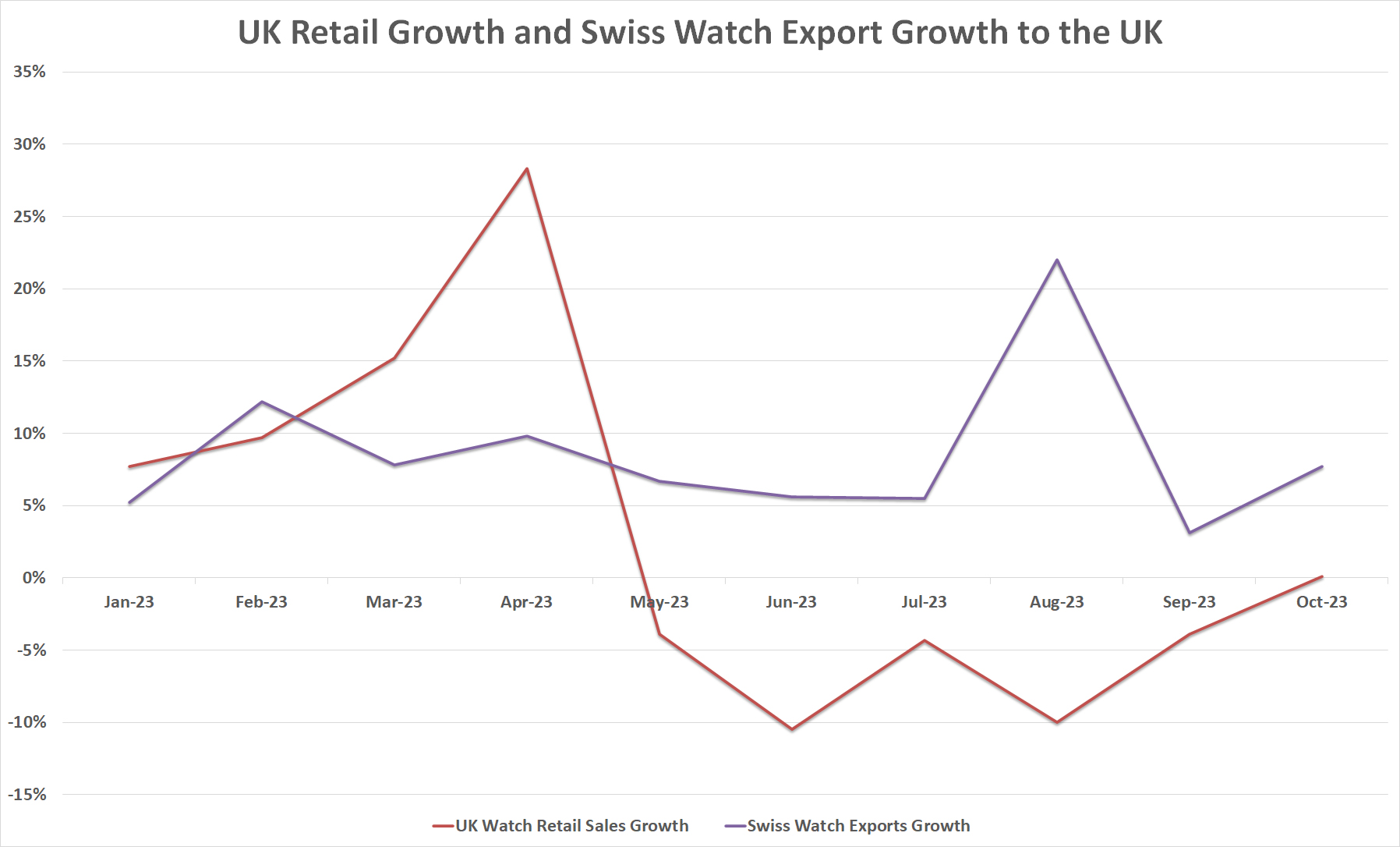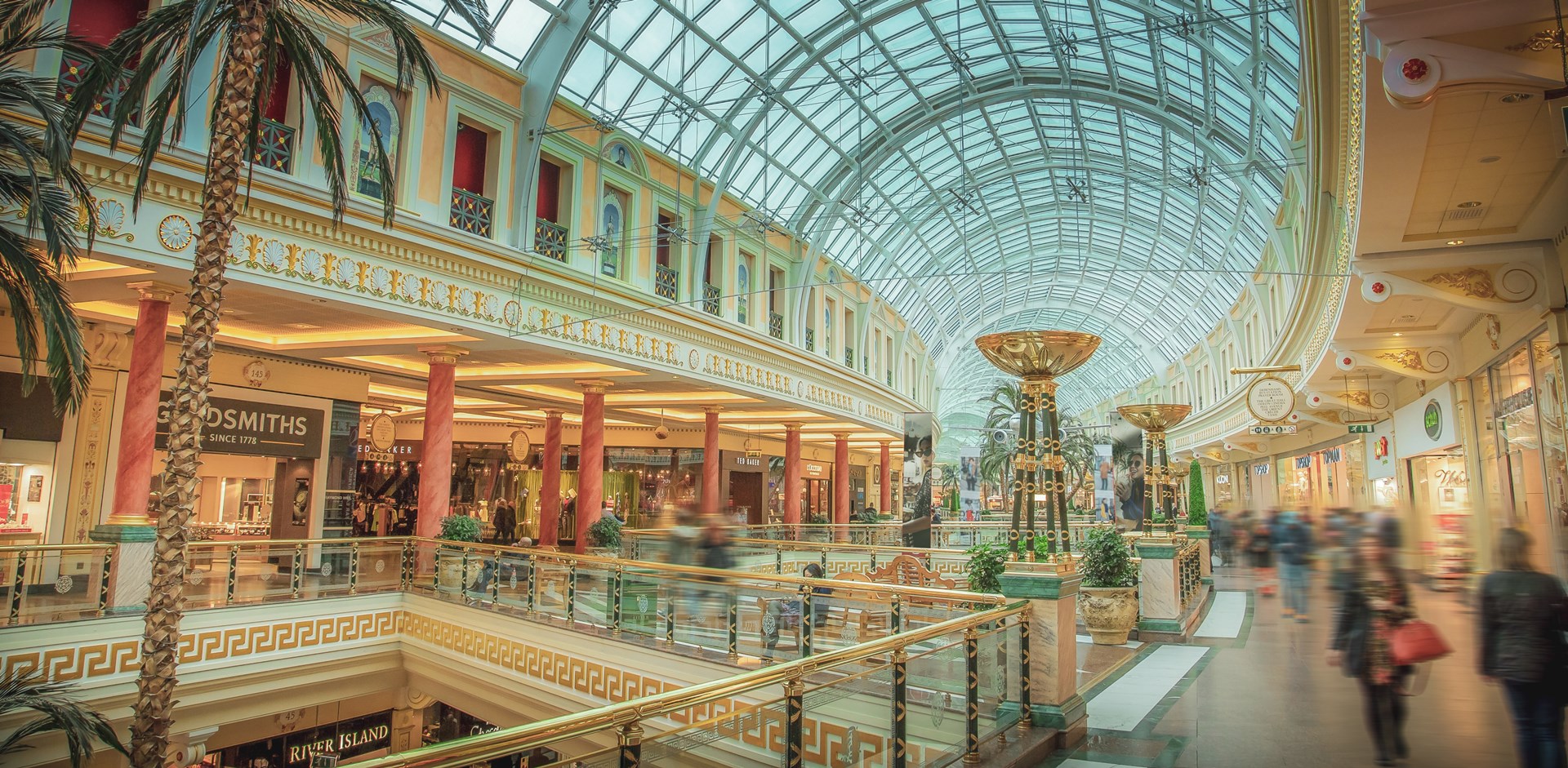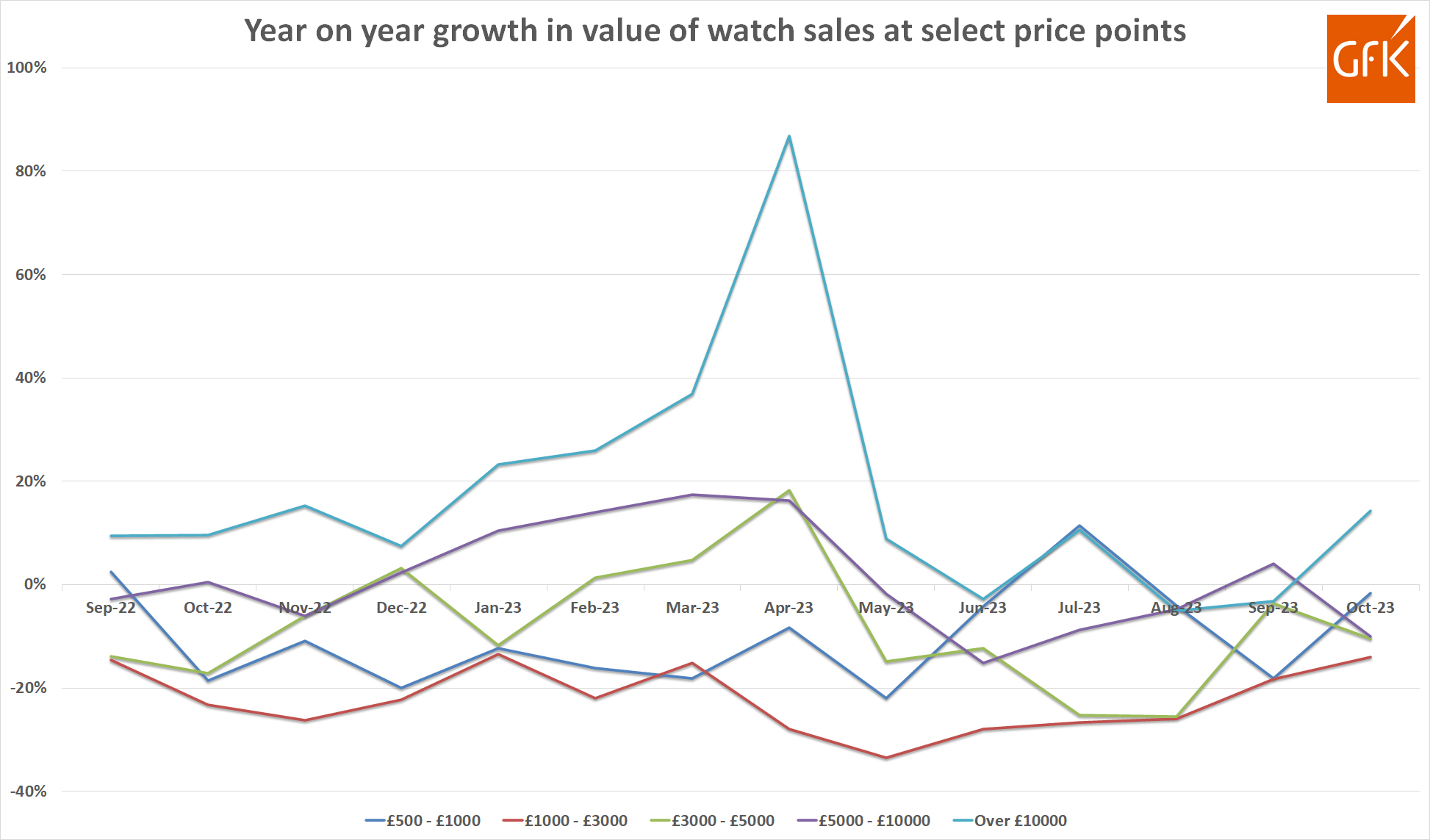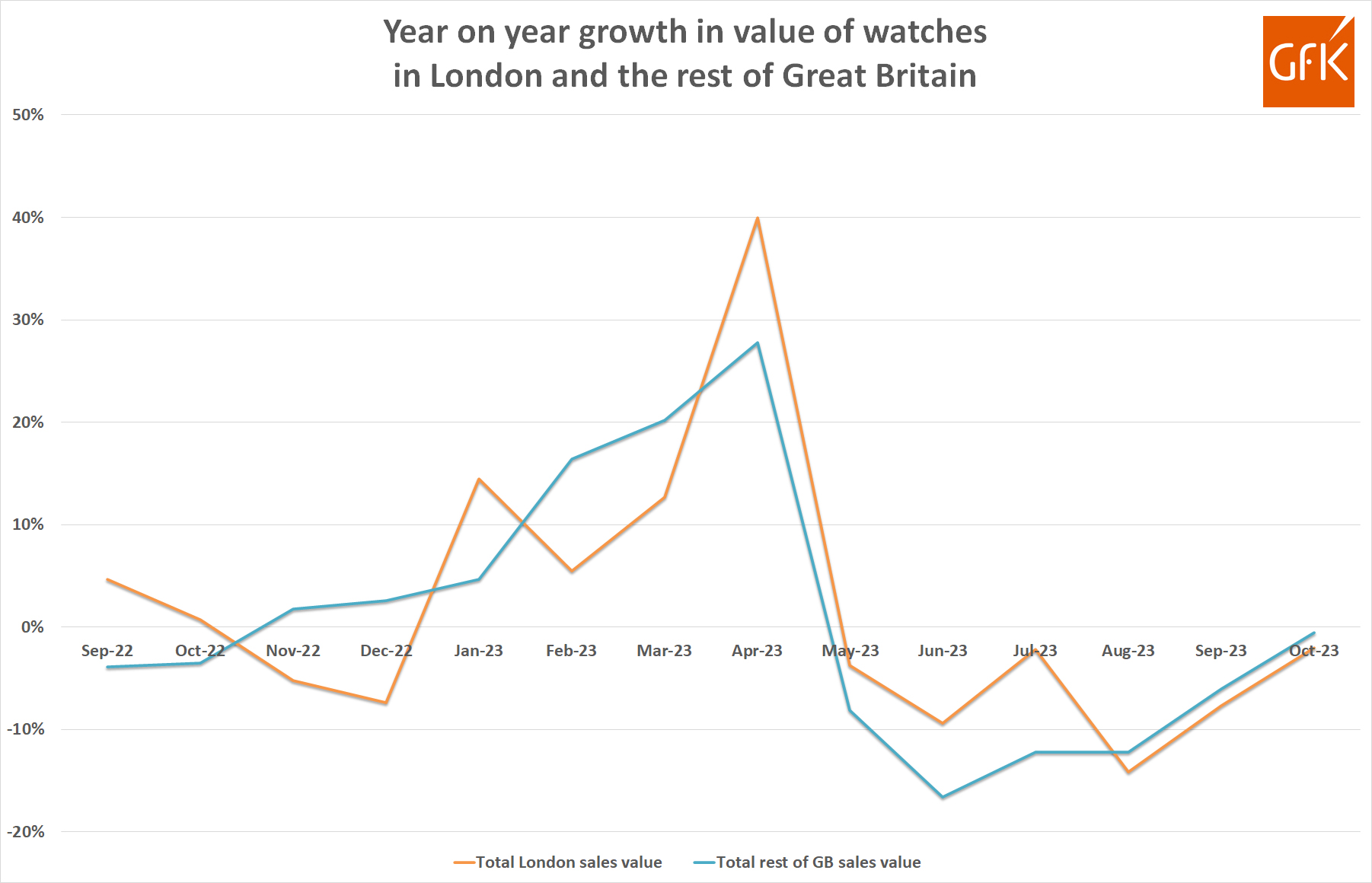Waiting lists are shortening for hot Rolexes, according to the chief commercial officer of Ahmed Seddiqi & Sons, the biggest luxury watch retailer in the Middle East.
Some British jewellers are reporting the same trend, although the biggest of them all, Watches of Switzerland Group — with its monobrand stores, Goldsmiths, Mappin & Webb and Watches of Switzerland showrooms — has a different experience.
“Demand for luxury watches remains robust and continues to exceed supply,” WoSG says in a statement published earlier this month along with its Q2 (August to September) results.
The Group is seeing “consistent additions to and conversions of the client Registration of Interest lists, and average selling prices continuing to increase,” it adds.
A dwindling number of waiting list watches is only one segment of the market.
Overall, according to retail analyst GfK, watch sales in Britain have been falling year-on-year since May.
The most recent GfK figure, for October, shows the value of watch at all price points sales flat on a year earlier, so there has been a significant slowdown over the past six months.
Notably, over that six months period, Swiss watch exports to the UK have been strongly growing by an average of 8.2% while UK retail sales contracted by an average of 5.2%.

Inventory is building up in this country.
But is it the right inventory?
If not, are we seeing a glut of supply for certain brands?
Only subscribers to the full GfK data service can see performance broken down by watch brands and references, but WatchPro is permitted to publish growth by price point.
This shows a long term trend in this country for falling sales of less expensive watches, and strong growth for the most pricey.
The toughest part of the market is in watches priced at £1,000 to £3,000, where brands like Longines, Tissot dominate; and £3,000 to £5,000, which is more associated with Breitling, TAG Heuer and Tudor.
It has been a good year for the £5000 to £10,000 segment, where Omega competes with higher end Breitlings and steel Rolexes; and an exceptional period for watches priced at over £10,000, which every brand wants a piece from from Rolex, Audemars Piguet and Omega to Hublot, Patek Philippe and Vacheron Constantin.
When it comes to the overall value of sales, the top end of the market is more affected than ever by six-figure watches from the likes of Patek Philippe and Richard Mille.
There is little evidence in GfK’s figures that the loss of VAT rebates is hitting London harder than the rest of Britain; in fact, the decline in sales over this summer was greater outside the capital.



